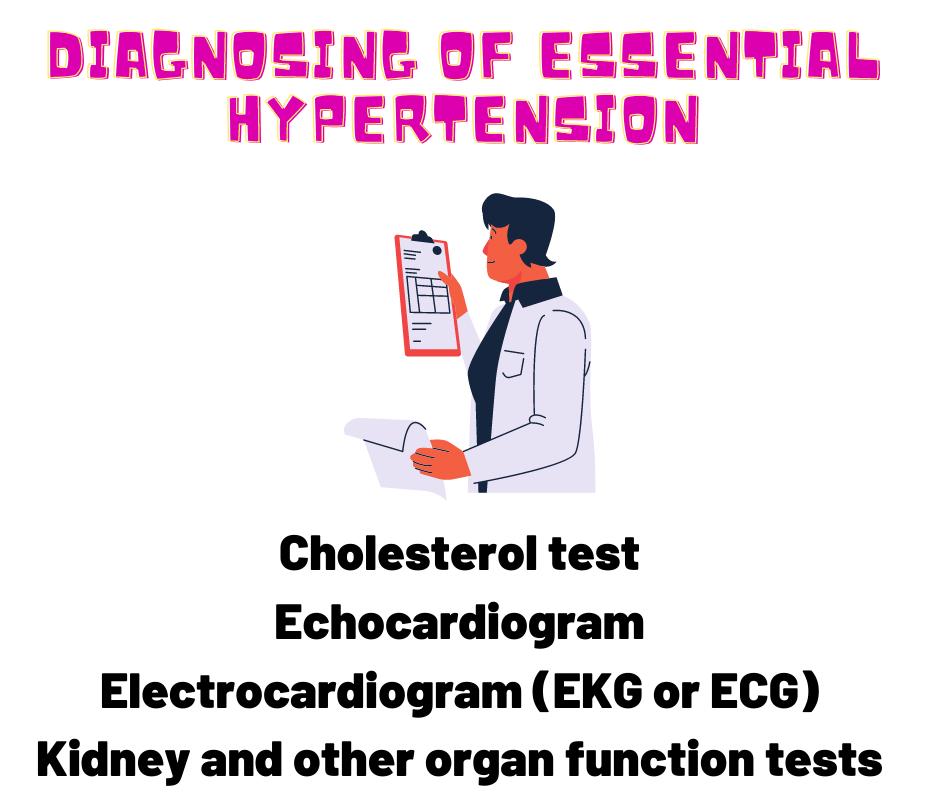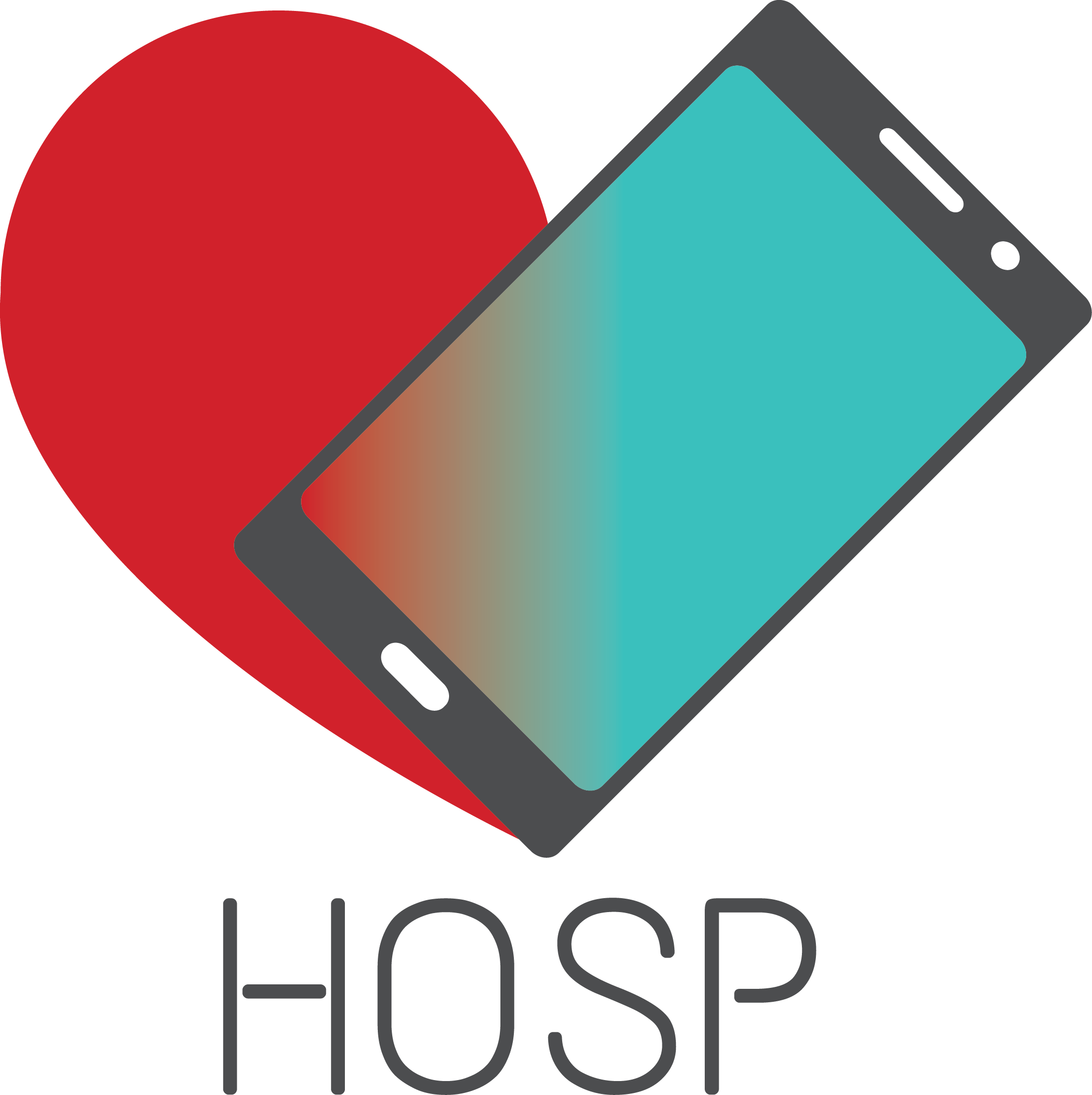Essential hypertension (called idiopathic hypertension or primary hypertension) is the form of hypertension that has no identifiable cause. It is usually familial and is likely to be the consequence of a complex interaction between genetic and environmental factors. On the other hand, the other type of hypertension is secondary hypertension. Secondary hypertension is high blood pressure that has an identifiable cause, with a prevalence of 5% of patients with hypertension.
Blood pressure is the force of the blood against the artery walls as the heart pumps blood through the body. Hypertension occurs when the force of blood is stronger than usual. Hypertension can increase the risk of cerebral, cardiac and renal events.
Risk factors for essential hypertension
By the definition essential hypertension has no identifiable cause, however, several risk factors were identified. The list of risk factors:
- Age: The risk of high blood pressure increases by aging. Until about the age of 64, essential hypertension is more common in men. Women are more likely to develop essential hypertension after the age of 65.
- Race: Essential hypertension is four times more common among people of African heritage. It accelerates more rapidly and with a higher rate of serious complications in people of African heritage.
- Family history: A personal family history of hypertension increases the likelihood that an individual would develop it.
- Being overweight or obese: Obesity can increase the risk of hypertension as compared with normal weight. More than 85% of cases occur in patients with a Body Mass Index (BMI) greater than 25. The mechanisms could include the activation of the sympathetic nervous system or the activation of the renin–angiotensin–aldosterone system.
- Lack of exercise: Regular physical exercise reduces blood pressure, and at the same time increases the risk of being overweight.
- Smoking: Smoking doesn`t directly cause high blood pressure but it is a known risk factor for serious cardiovascular disease. Secondhand smoke also can increase the risk of developing heart disease.
- Salt: When sodium intake exceeds the capacity of the body to excrete it through the kidneys, vascular volume expands and this leads to an increase of blood pressure.
- Alcohol: Over time, excessive alcohol consumption can damage the heart. Having more than one drink a day for women and more than two drinks a day for men may affect your blood pressure.
- Stress: High levels of stress can lead to a temporary increase in blood pressure.
Classification
The most recent classification recommends blood pressure criteria for defining normal blood pressure, prehypertension, hypertension (stages I and II), and isolated systolic hypertension. Blood pressure readings are described with two numbers, usually written this way: 120/80. The first number is systolic pressure. Systolic pressure measures the force of blood against artery walls as the heart pumps blood to the body. The second number measures diastolic pressure, which is the force of the blood against the artery walls between heartbeats, as the heart muscle relaxes.
Normal blood pressure is measured less than 120/80 millimeters of mercury (mmHg). Elevated blood pressure is higher than normal, but not quite high enough to be hypertension. Elevated blood pressure is a systolic pressure of 120 to 129 mmHg, a diastolic pressure less than 80 mmHg. Stage 1 hypertension is a systolic pressure of 130 to 139 mmHg, or a diastolic pressure of 80 to 89 mmHg. Stage 2 hypertension is a systolic pressure higher than 140 mmHg, or a diastolic pressure higher than 90 mmHg.
Diagnosis of essential hypertension
For most patients, high blood pressure is diagnosed when blood pressure readings are consistently 130/90 mmHg or above. A blood pressure reading can be done in the doctor`s office or at the clinic. To track blood pressure readings over a period of time, the doctor may ask the patient to come on different days and at different times. If the blood pressure is high, the doctor may want from a patient to check his blood pressure at home during regular intervals. It usually takes 2–3 readings at several medical appointments to diagnose high blood pressure.

The doctor can perform a physical exam to check for signs of heart disease, and may also order the following test to detect organ damage:
- Cholesterol test
- Echocardiogram
- Electrocardiogram (EKG or ECG)
- Kidney and other organ function tests
Treatment
There’s no cure for essential hypertension, but there are treatments that can help manage high blood pressure and keep it under control. The treatment consists of lifestyle changes and medication. Recommended lifestyle changes are the following: exercising at least 30 minutes a day, losing weight, quit smoking, reducing stress levels, limiting alcohol intake, eating a low-sodium, heart-healthy diet (recommended DASH diet). If these lifestyle changes don’t lower the blood pressure levels enough, the doctor may prescribe one or more antihypertension medications, such as: beta-blockers, calcium channel blockers, diuretics, angiotensin-converting enzyme (ACE) inhibitors, angiotensin II receptor blockers.
Complications
The excessive pressure on the artery walls caused by high blood pressure can damage the blood vessels, as well as the organs. Therefore, uncontrolled high blood pressure can lead to complications including:

- Heart attack or stroke
- An aneurysm
- Heart failure
- Weakened and narrowed blood vessels in the kidneys
- Thickened, narrowed or torn blood vessels in the eyes
- Metabolic syndrome
- Dementia
With a healthy lifestyle and medication, there’s a good chance that you can control your blood pressure. Moreover, controlling essential hypertension reduces the risk of a heart attack, stroke, heart failure, damage to the eyes or kidneys. If you already have organ damage the treatment would help limit further damaging.

